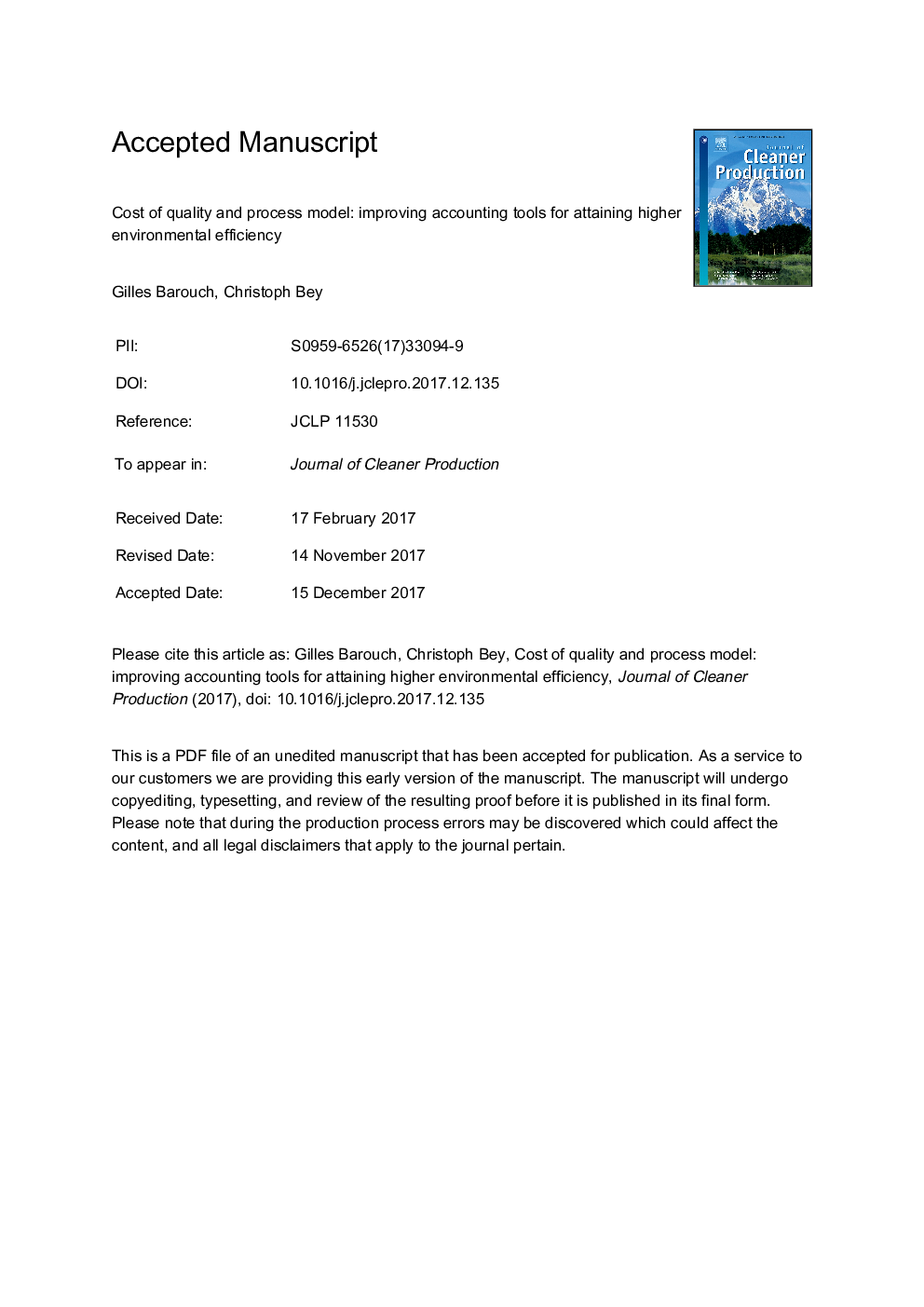| Article ID | Journal | Published Year | Pages | File Type |
|---|---|---|---|---|
| 8097599 | Journal of Cleaner Production | 2018 | 27 Pages |
Abstract
The article, based on a case study of pig farming in France, examines water and air pollution, and finds that, in a traditional system of allocating costs, individual socio-economic actors would shoulder higher repair or restoration costs instead of prevention costs. It shows the importance of prevention for a higher environmental efficiency and adopts a broader view than just the individual economic actor, utilising a process model covering an entire chain of pollution costs (including different stakeholders' objectives and cost structures), beginning with natural resource degradation as an input and ending with the output delivered to “end users” (stakeholders who endure pollution effects). This article suggests a methodological framework that allows a rapprochement between socio-economic actors - those polluting and others, suffering pollution in a more economically efficient manner: Cost of quality (CQ) and process model concepts can be used for public decision-making, supplanting standard welfare economics approaches. It is demonstrated here that those concepts can establish a concise and realistic economic basis for natural resource management, and enable better decision-making on efficient investment in environmental protection.
Keywords
Related Topics
Physical Sciences and Engineering
Energy
Renewable Energy, Sustainability and the Environment
Authors
Gilles Barouch, Christoph Bey,
